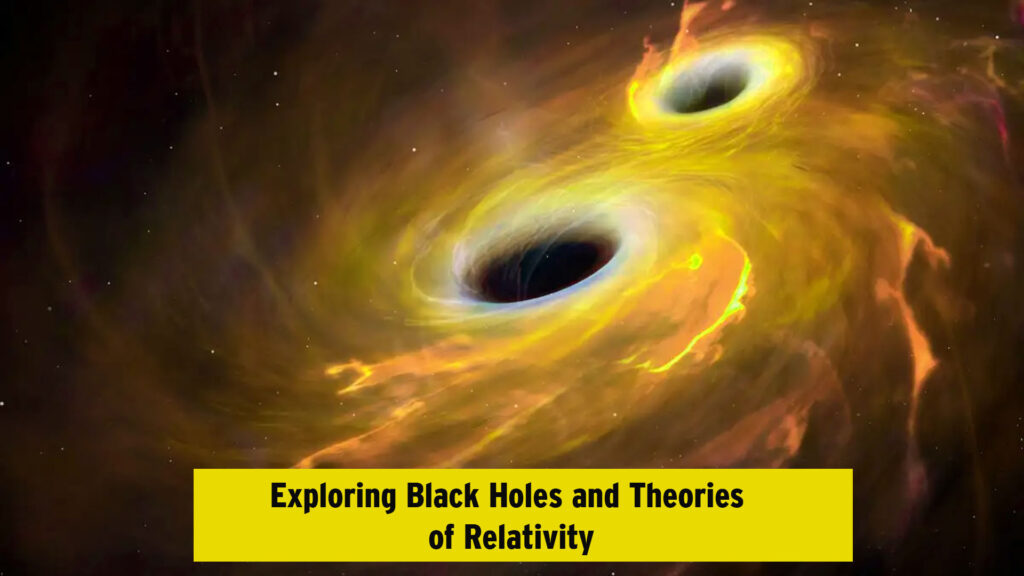Introduction
Black holes are among the most intriguing enormous marvels, regularly portrayed as districts of spacetime where gravity is so strongly that nothing, not indeed light, can elude. Their secretive nature has captivated researchers and stargazers for decades. The think about of black holes interfaces specifically to Einstein’s hypotheses of relativity, which revolutionized our understanding of time, space, and gravity. From their disclosure to cutting edge investigate, black holes have challenged routine science, driving to breakthroughs in material science, astronomy, and cosmology. This article investigates their characteristics, the part of relativity, and the future conceivable outcomes these infinite puzzlers may hold.
The Nature of Dark Holes
A dark gap shapes when a gigantic star depletes its atomic fuel and collapses beneath its claim gravity. The center gets to be so thick that it twists spacetime, making a gravitational peculiarity. The encompassing boundary, known as the occasion skyline, marks the point of no return—once crossed, nothing can elude. Black holes change in measure, from stellar-mass black holes to supermassive ones at galactic centers. Their extraordinary properties resist standard material science, making them significant in testing the limits of relativity. Understanding black holes permits researchers to test profound into the principal workings of the universe.
Einstein’s Common Relativity
Albert Einstein’s hypothesis of common relativity, presented in 1915, gives the establishment for advanced dark gap science. Common relativity portrays gravity not as a drive, but as the twisting of spacetime caused by mass and vitality. Concurring to this hypothesis, a dark gap speaks to the most extraordinary ebb and flow of spacetime. Einstein himself questioned the physical reality of such objects, however afterward prove affirmed their presence. Nowadays, common relativity remains one of the most fruitful hypotheses, clarifying marvels from planetary circles to gravitational lensing and empowering the expectation of black holes with momentous accuracy.
Special Relativity and Time
Einstein’s extraordinary relativity, presented in 1905, reshaped how we see time and space. It set up that time is relative depending on speed and gravitational impact. Close a dark gap, time widening happens: an eyewitness distant from the dark gap sees time passing ordinarily, whereas for somebody close the occasion skyline, time shows up to moderate drastically. This interesting impact has been affirmed through both hypothetical calculations and exploratory prove, such as nuclear clocks in gravitational areas. Black holes offer the extreme research facility for considering relativity, where the concepts of time, space, and vitality focalize in extraordinary conditions.
Event Skyline and Singularity
The occasion skyline speaks to the boundary of a dark gap past which no data can elude. Once matter or light crosses it, the destiny is fixed. At the center lies the peculiarity, where thickness gets to be unbounded and the known laws of material science collapse. The peculiarity challenges our understanding, requesting a hypothesis that binds together relativity with quantum mechanics. Physicists accept the peculiarity might hold the key to replying significant questions around the beginning of the universe, the nature of time, and the crucial structure of reality itself. However, coordinate perception remains inconceivable due to its covered up nature.
Types of Dark Holes
Black holes exist in diverse categories, classified by mass and arrangement. Stellar black holes are made from collapsed stars, ordinarily a few times bigger than the Sun. Halfway black holes are rarer and shape through the consolidating of stellar ones. Supermassive black holes, with millions or billions of sun powered masses, dwell in the centers of universes, counting our Smooth Way. Primordial black holes, still hypothetical, may have shaped without further ado after the Enormous Blast. Each sort gives one of a kind understanding into enormous advancement, structure arrangement, and the behavior of matter beneath incredible gravitational conditions.
Observational Evidence
For a long time, black holes remained hypothetical. In any case, circuitous prove in the long run affirmed their presence. Watching the circles of stars close the center of our universe uncovered the nearness of an undetectable, supermassive dark gap called Sagittarius A*. In 2019, the Occasion Skyline Telescope captured the first-ever picture of a dark hole’s shadow in world M87, advertising groundbreaking visual verification. Gravitational wave location from colliding black holes encourage approved Einstein’s expectations. These accomplishments not as it were affirmed black holes but too showcased the headways in cosmic innovation and the collaborative exertion of worldwide logical communities.
Black holes and Quantum Physics
While relativity clarifies black holes on a enormous scale, quantum material science administers subatomic behavior. The two systems clash at the peculiarity, where quantum mechanics ought to anticipate interminable thickness. Stephen Selling presented the concept of Selling radiation, proposing that black holes radiate particles and can in the long run vanish. This bridges relativity with quantum hypothesis but raises unused catch 22s, like the data misfortune issue. Accommodating black holes with quantum mechanics may lead to a bound together hypothesis of quantum gravity, a breakthrough that may revolutionize advanced material science and develop our understanding of the universe.
Conclusion
Black holes speak to both the triumph and the limits of present day science. Established in Einstein’s speculations of relativity, they embody the unusual however rich texture of spacetime. From stellar remainders to supermassive mammoths, they challenge our information of gravity, time, and quantum mechanics. Observational breakthroughs and hypothetical progressions proceed to unwind their secrets, in spite of the fact that significant questions stay. Investigating black holes is not fair around considering removed enormous objects—it is a travel into the crucial standards of presence. The interest of their privileged insights may one day rethink humanity’s understanding of the universe itself.

